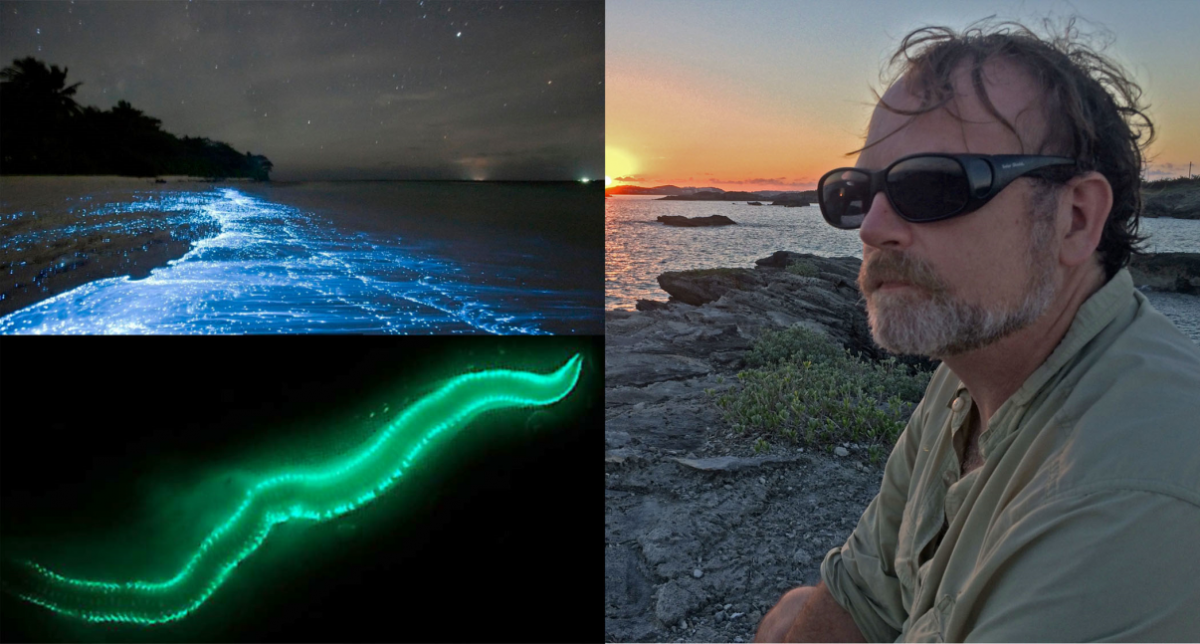Join us for cocktail hour, dinner, science quiz (with prizes!), and presentation by scientist Mark Siddall.
Marine bioluminescence has fascinated researchers since Pliny used jellyfish slime on his walking stick as a make-shift torch two-thousand years ago. You may have wondered about minute sparks and brief glints of light which are seen seasonally in Long Island Sound. Missionaries proclaimed the sun “impregnated and filled the sea during the day with an infinity of fiery and luminous spirits.”
What is the true cause of this? What creatures are involved? How do they do it? What purpose does it serve? Find out what caused the ocean to glow, as Christopher Columbus documented in 1492, just in advance of his historic landfall in the Americas. How is it that bioluminescent displays are timed so precisely? Mark Siddall answers these questions and examines the genes that are behind this incredible marine bioluminescent display.
Mark Siddall is Curator, Division of Invertebrate Zoology, American Museum of Natural History. Self-styled “Curator of Wormy-slimy Stuff”, his research focusses on evolutionary biology of charismatic microfauna from microbes to leeches. Mark recently led expeditions to South Sudan, Cambodia and the Lower Amazon. His work varies from sequencing the first whole genome of bed bugs to leveraging iDNA as a measure of endangered animal diversity.
DARWINDAY is an international celebration of science and humanity held around Charles Darwin’s February 12thbirthday. It celebrates the discoveries and life of the man, and expresses gratitude for the enormous benefits that scientific knowledge, acquired through human curiosity and ingenuity, has contributed to the advancement of humanity.
Date & Time: Saturday, February 16, 2019
6 PM Cocktails
7 PM Dinner
Location: The Italian Center,
1620 Newfield Avenue,
Stamford, CT 06905
